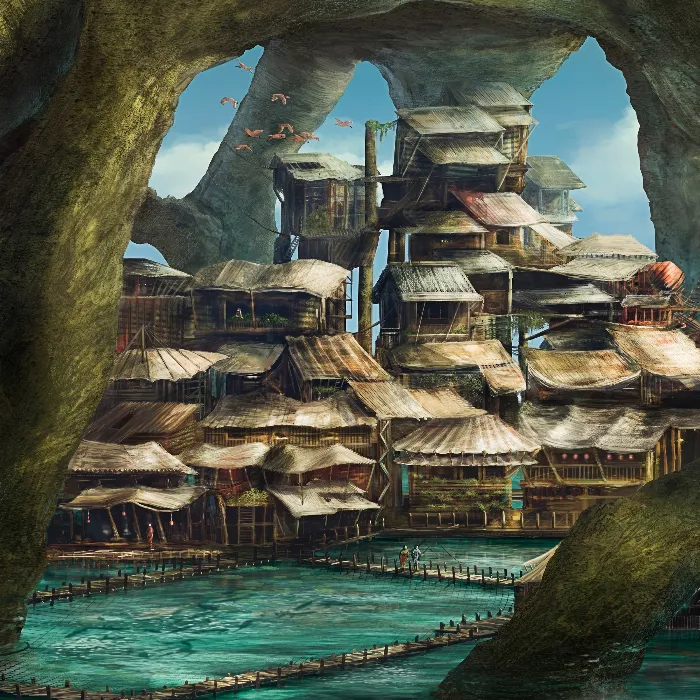Working with existing scenes in digital painting requires a deep understanding of perspective. While spontaneous elements can be added, without a clear definition of spatial representation, the overall impression often appears unrealistic. This guide shows you how to analyze the perspective of a scene and effectively use it for your own compositions.
Key Insights
- A well-founded analysis of perspective is crucial for creating realistic scenes.
- The horizon and vanishing points are key to defining perspective.
- Worm’s-eye and bird’s-eye views influence how new elements should be inserted.
Step-by-Step Guide
Firstly, it’s about analyzing the existing motif. For example, if you are working with a street scene and want to add another person, it is essential to recognize the perspective and define all vanishing points. Start by determining a horizon, as this sets the frame of your composition.
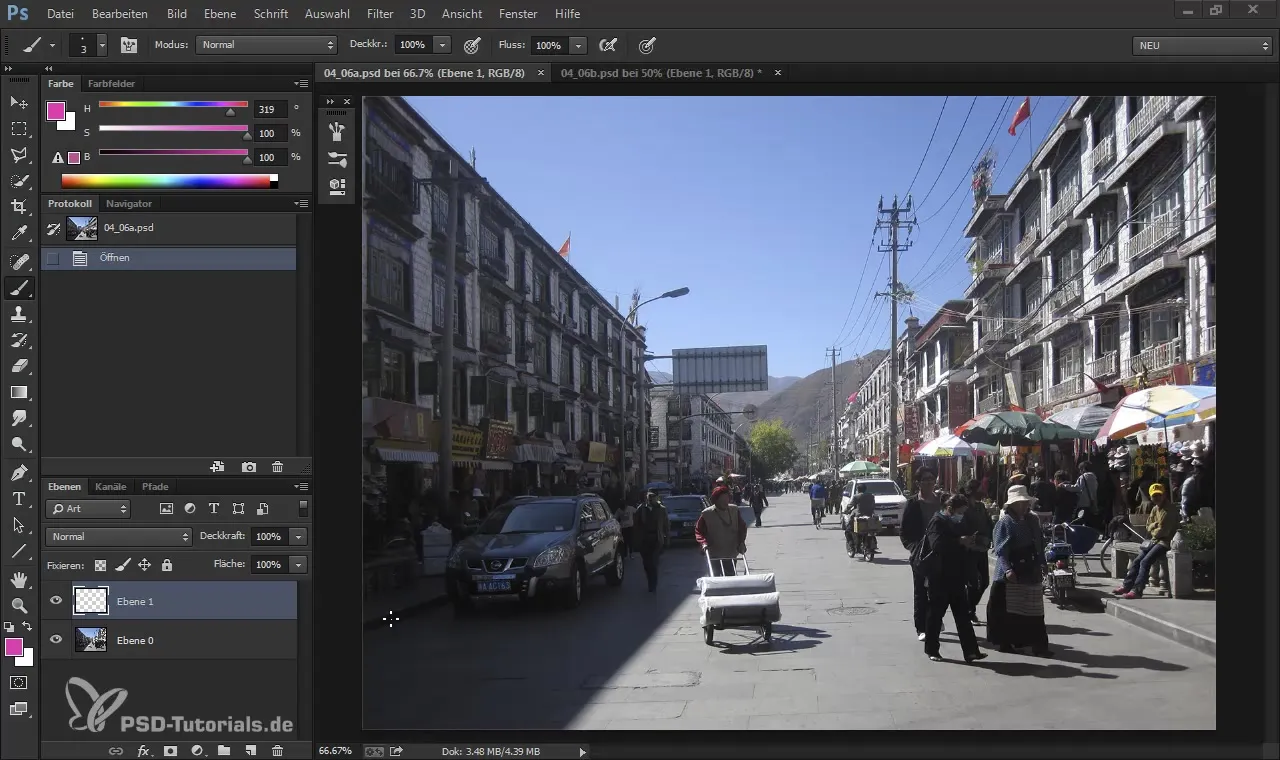
The horizon will then help you establish the vanishing points. Simply draw lines from prominent points in the scene to see where they intersect. The strongest lines often include the edges of buildings or streets. Use the line tool in your graphic program and draw these guide lines on a new layer to avoid muddying your image.
Once you have drawn the lines, be sure to reflect on the dominant lines in the scene. These lines help you understand where the central vanishing point is located. This is usually in the center of the image, but you may also want to consider a second vanishing point.
With the horizon and vanishing points, you can now add more elements to the scene. Keep in mind that everything above the horizon line is viewed from a worm’s-eye perspective, and everything below is from a bird’s-eye perspective. Pay particular attention to how objects and people relate to the horizon line.
Therefore, if you want to insert a new person, measure their size in relation to the horizon line. At this point, it is important to keep the eye level of the elements you want to draw in mind, as they should typically be at the same height to create a consistent image.
Another important aspect is the size relationships of objects in your scene. For instance, if you want to depict a car, its height should match the ground exactly. Ensure that the wheels of the car are on the ground line. Perspective gives you the opportunity to determine proportions – both in height and width.
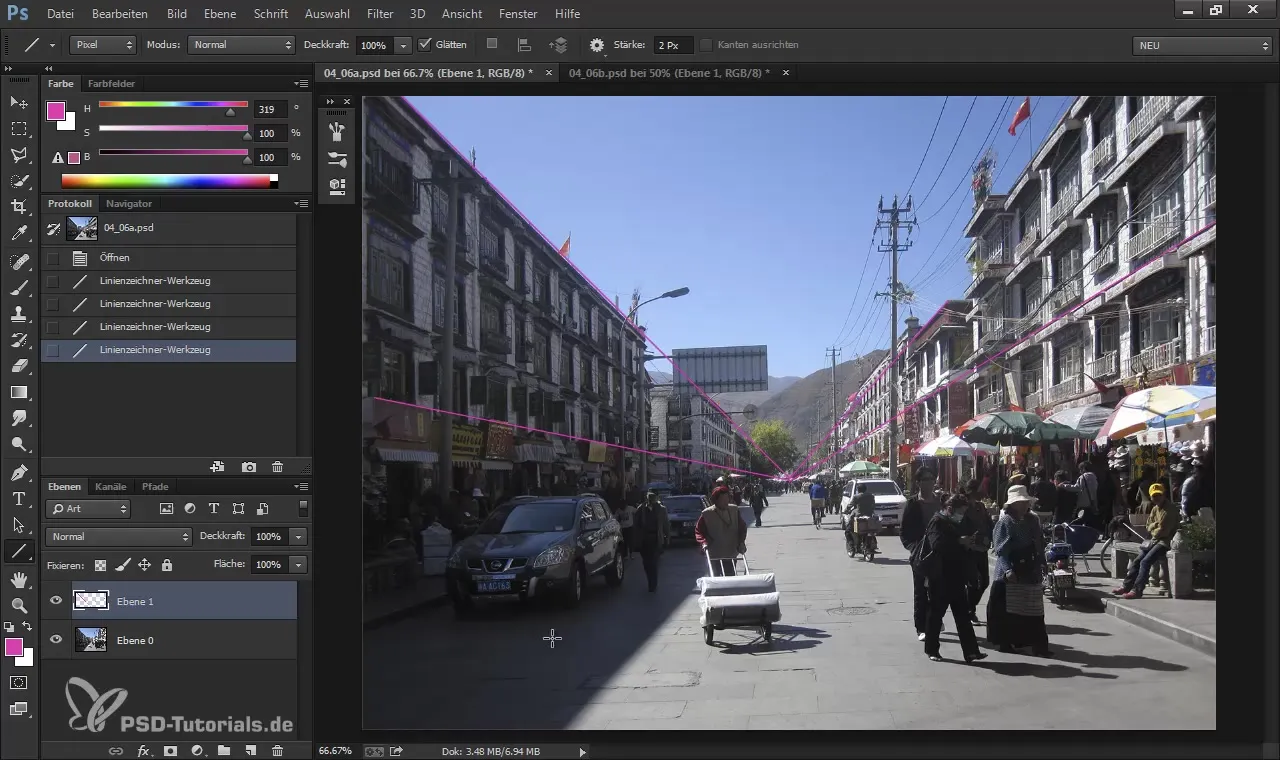
Make sure that any further elements you want to insert align with the existing lines. You should keep an eye on the height and width of the desired objects. This insight allows you to better design the entire space in the scene and create more realistic effects.
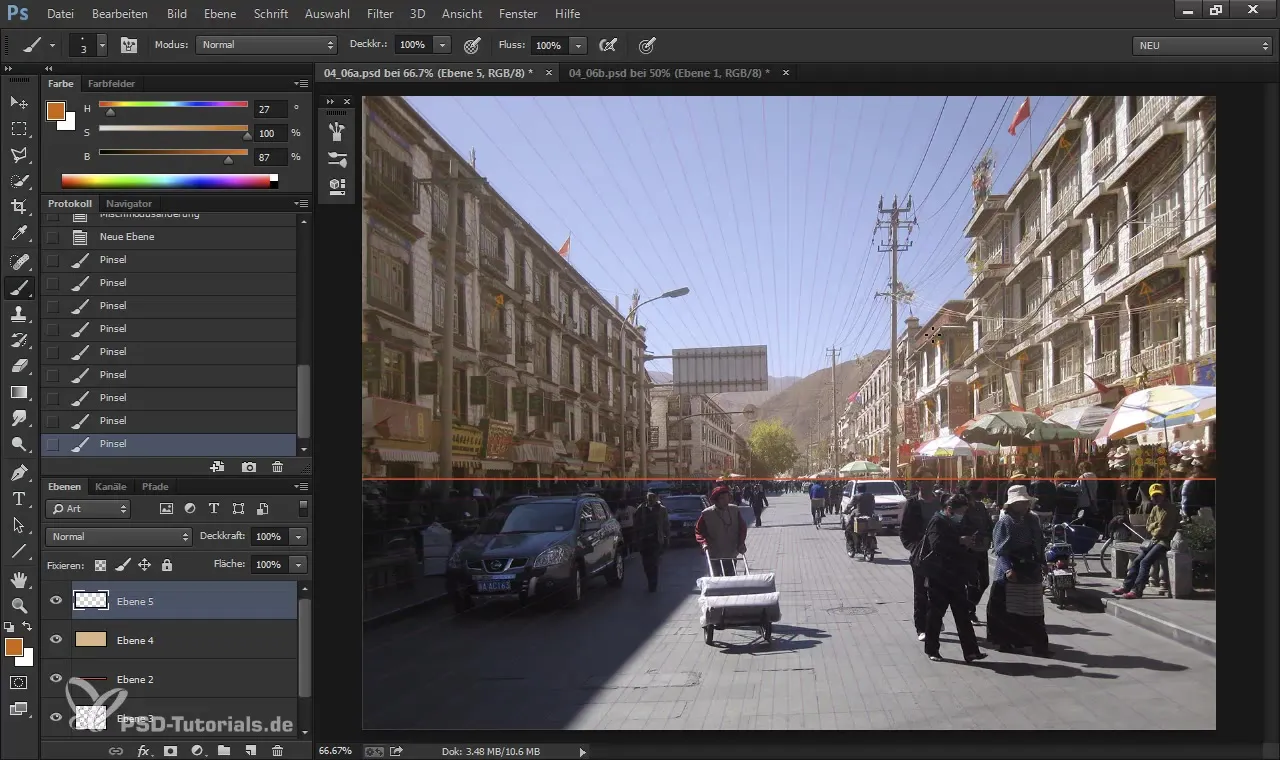
Throughout your work, it’s helpful to use different guide lines to keep track. These lines add visual reference points and help you establish the correct position and orientations of the new elements. When working with unexpected perspectives, it is necessary to regularly check and adjust all lines and vanishing points as needed.
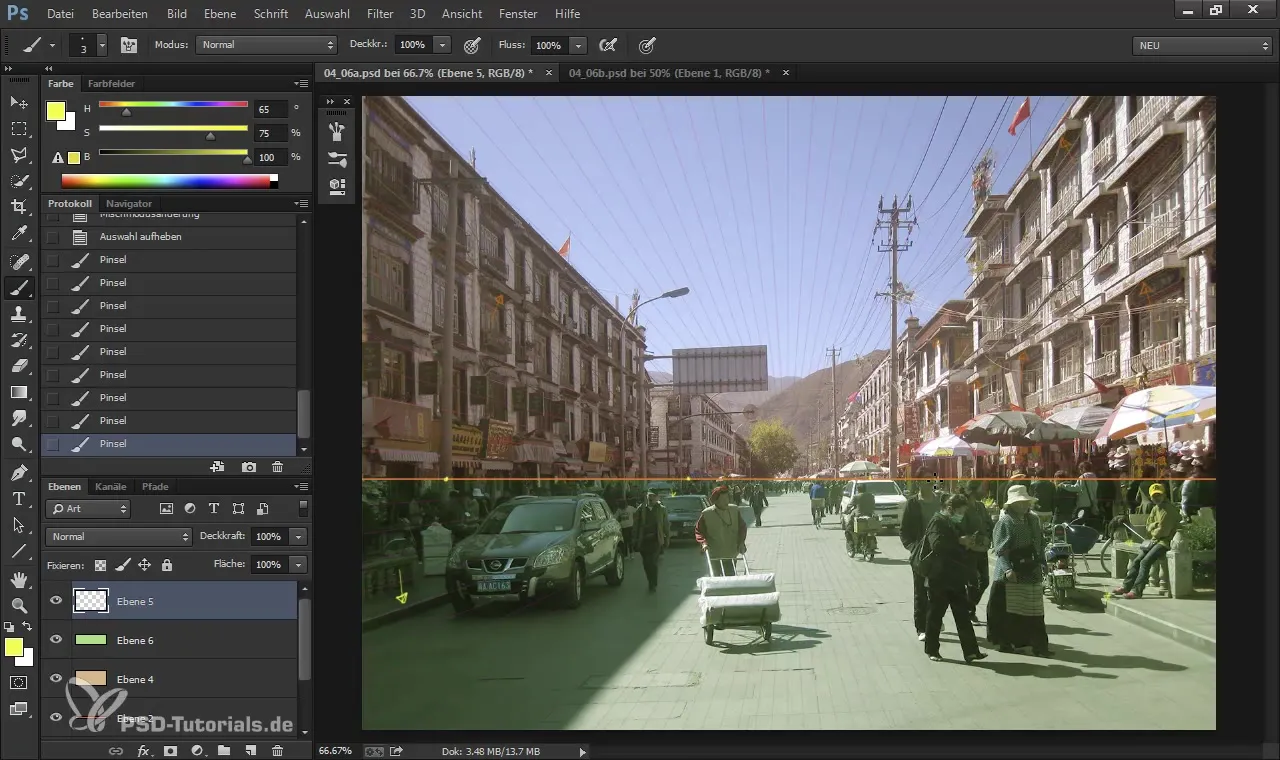
Finally, it is crucial to complete your work by ensuring that all perspectives are coherent and visually connected. This will achieve a harmonious overall image where nothing is lost or appears unnatural. With the techniques learned, you are now able to enrich your digital paintings with impressive details.
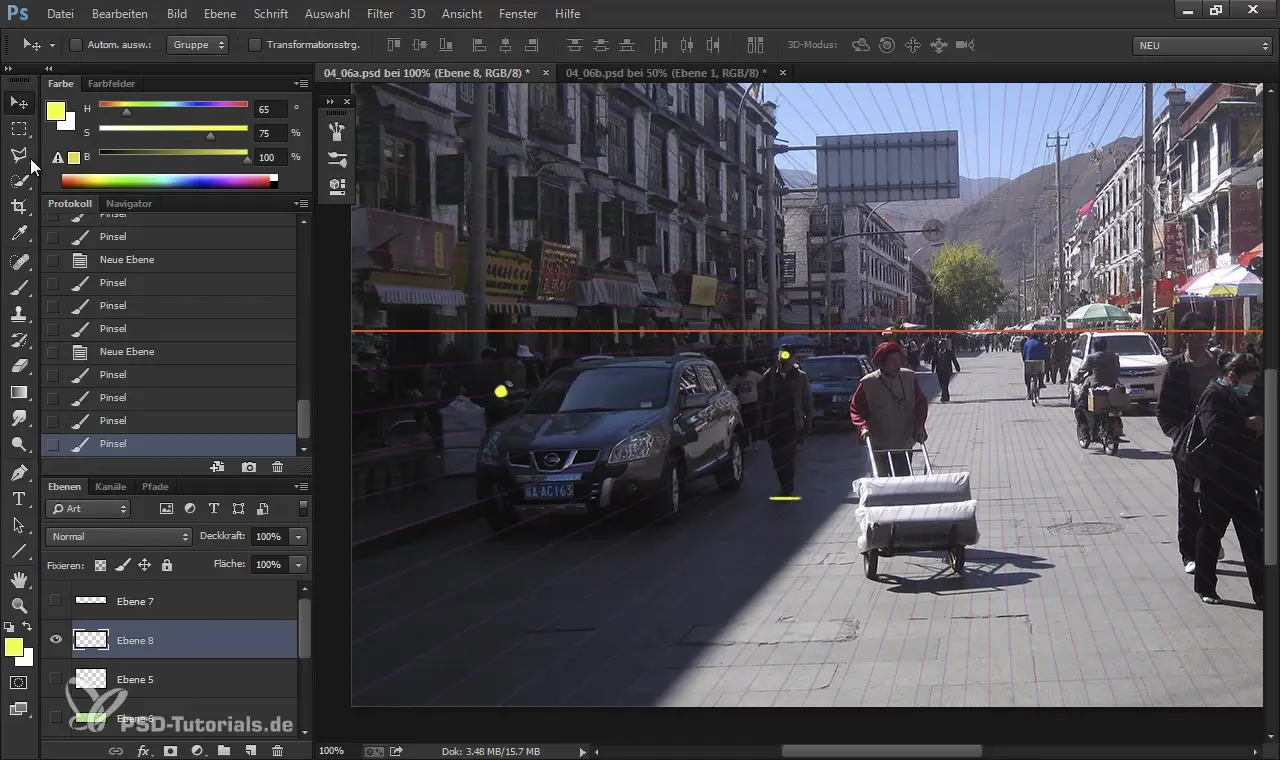
Summary – Analyzing and Defining Perspective in Digital Painting
The ability to recognize and construct the perspective of an existing scene is fundamental for successful digital and matte painting. By drawing guide lines and analyzing the existing structures, you can harmoniously integrate new elements into your composition.
Frequently Asked Questions
How do I find the vanishing point in my scene?Finding the vanishing point is done by analyzing dominant lines in the scene and extending them until they meet.
Should I always keep the perspective the same?Ideally, it’s best to maintain a consistent perspective to create a harmonious image. However, combining different perspectives can make the image more dynamic.
How does eye level influence a new drawing?Eye level ensures that the height of people and objects is properly proportioned and relates to other elements in the image.
